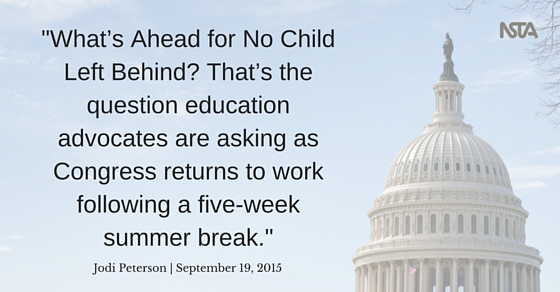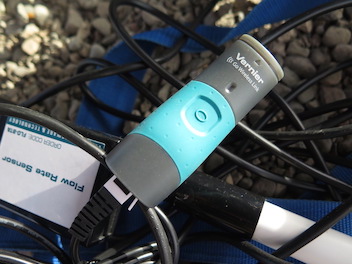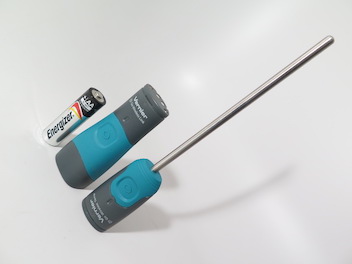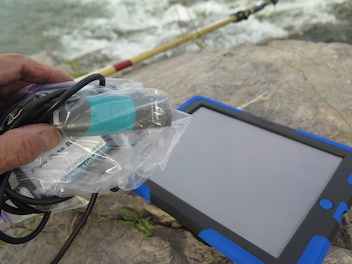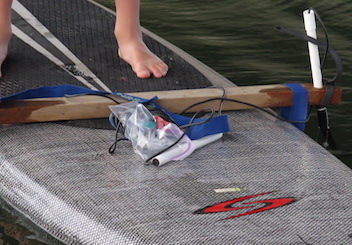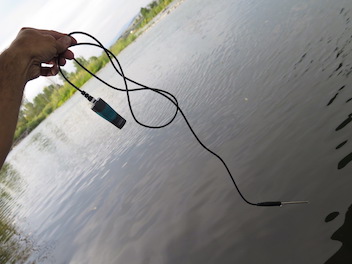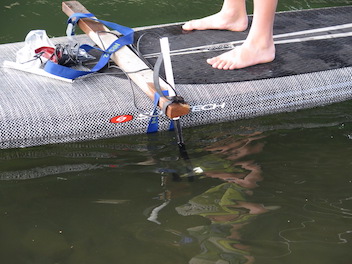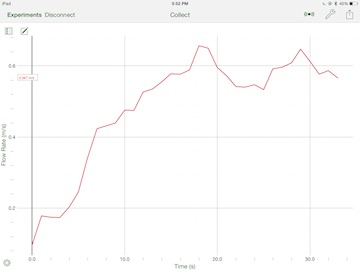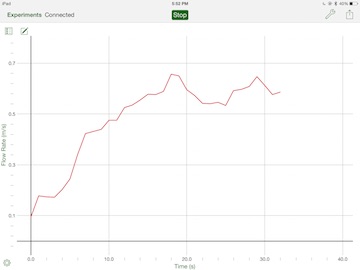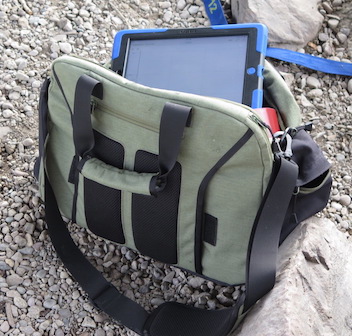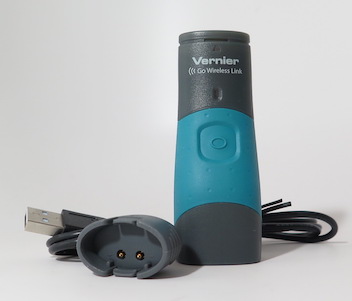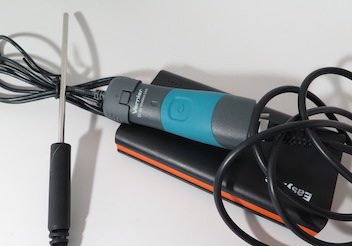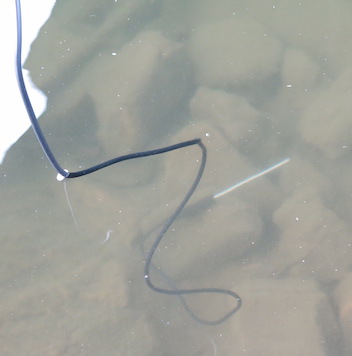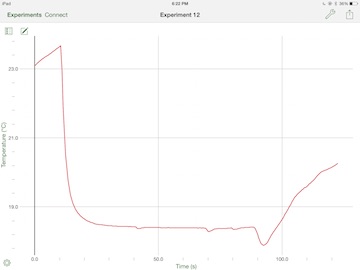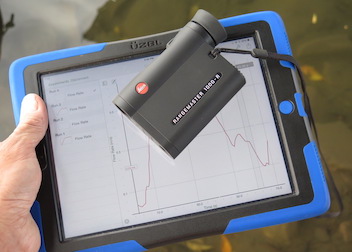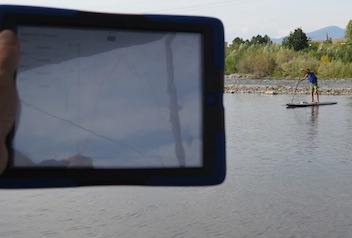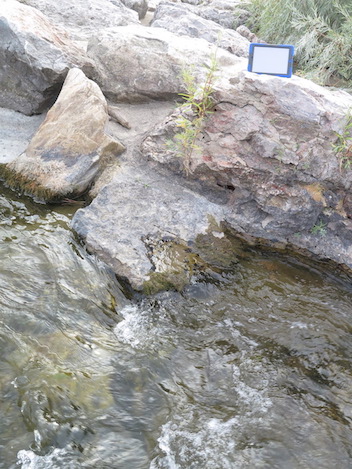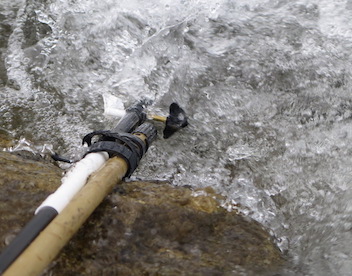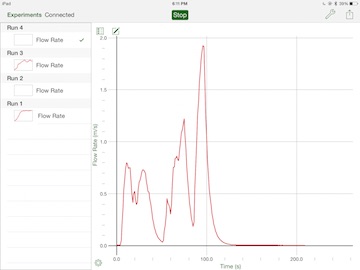Legislative Update
What’s Ahead for No Child Left Behind?
By Jodi Peterson
Posted on 2015-09-19
What’s ahead for No Child Left Behind (NCLB)? That’s the question education advocates are asking as Congress returns to work following a five-week summer break faced with a full slate of issues to address, including the threat of a government shutdown on October 1 if no budget agreement is reached.
So what does a full Congressional calendar mean for the reauthorized NCLB? (Read what happened this summer here and here). Congressional leaders [House Education and the Workforce Committee Chairman John Kline (R-MN); Ranking Member Bobby Scott (D-VA); Senate Health, Education, Labor, and Pensions Committee Chairman Lamar Alexander (R-TN); and Senate Ranking Member Patty Murray (D-WA)] have met and are working to reconcile the differences in the House and Senate versions of their bills to reauthorize the Elementary and Secondary Education Act (NCLB). Rep. Kline will lead the conference committee, and additional conference members are expected to be named in late September or early October. The goal is to reconcile a bill that will pass both chambers and the President will sign by the end of the year.
The big issues still to be resolved include the cuts in federal programs; a provision that would let students opt out of testing; and portability. Accountability issues also continue to dominate the conversation. The House bill has no accountability criteria, and the Senate bill requires states to have accountability systems, but there are no federal safeguards to intervene or report out low performing schools. Many groups continue to push conferees to include stronger provisions that would hold states accountable for identifying and addressing educational disparities.
In related news, Rep. Kline has announced that he will not be seeking re-election, and is optimistic that Congress will finish a bill this year (he will continue in his current role thru the end of 2016). If the House continues under Republican majority after the 2016 election, possible successors include Representatives Joe Wilson and Virginia Foxx.
Both the House ESEA bill (the Student Success Act, H.R. 5,) and the Senate ESEA bill (Every Student Achieves Act, S. 1177), would retain current-law requirements for states to continue to assess student performance in mathematics and science and that states be required to adopt rigorous standards in these subjects.
The Senate Bill contains a provision (Title II-E) that would provide each state with dedicated resources focused on improving teaching and learning in STEM subjects. This provision would support partnerships between schools, businesses, non-profits and institutions of higher education which would support a wide range of STEM-focused objectives, including recruitment, retention, and professional development of educators, expansion of learning opportunities both in and outside the classroom, and closing achievement gaps for at-risk and high-need student populations. We are hopeful that the conferenced bill will contain this Senate language.
Government Shutdown in Sight?
Lots of crystal ball gazing this week as political pundits from the left and the right are speculating as to whether the federal government will shut down on Oct. 1 if Congress cannot pass a budget bill for the fiscal year.
A continuing resolution, (CR) would extend FY 15 funding for another year, which would be the best scenario for Department of Education programs which would see major cuts in funding in the FY 2016 spending bills proposed to date.
To wit, the House of Representatives (once again) eliminated funding for the Mathematics and Science Partnerships (Title IIB) at the U.S. Department of Education under the 2016 Labor, Health and Human Services (HHS), and Education appropriations bill, stating “these activities can be carried out under other authorities funded in this bill and through other federal agencies such as the National Science Foundation.”
The Senate education funding bill did provide continued support for the Math and Science Partnership program at the Department of Education, at the level of $141,299,000.
The National Science Teachers Association (NSTA) and the National Council of Teachers of Mathematics (NCTM) will be sending a joint letter asking members of Congress to support the Senate funding level for the Department of Education Math and Science Partnership program.
Another big issue for education this year is the effort to stop sequestration and take a more balanced approach to deficit reduction.
Nondefense discretionary (NDD) programs—ranging from education and job training, to housing and science, to natural resources and veterans services, to public health, safety and security—have been cut dramatically and disproportionately in recent years as lawmakers work to reduce the deficit. Many groups are urging Congress to replace sequestration with a balanced approach to deficit reduction that takes into account the deep cuts NDD has already incurred since 2010 and ensure sequestration relief is equally balanced between NDD and defense programs. Learn more here.
Stay tuned, much more to come in the weeks ahead.
Jodi Peterson is Assistant Executive Director of Legislative Affairs for the National Science Teachers Association (NSTA) and Chair of the STEM Education Coalition. e-mail Jodi at jpeterson@nsta.org; follow her on Twitter at @stemedadvocate.
The mission of NSTA is to promote excellence and innovation in science teaching and learning for all.
Follow NSTA
Positive parent communications
By Mary Bigelow
Posted on 2015-09-17
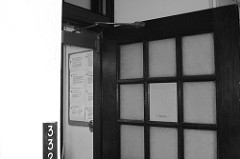 When I taught at the elementary level it was easy to communicate with the parents of 25 students. Now that I’m teaching science at the middle school, I’m overwhelmed by the thought of trying to communicate personally with more than 150 parents. I’d like to go beyond quarterly progress reports or just posting grades online. —B., Massachusetts
When I taught at the elementary level it was easy to communicate with the parents of 25 students. Now that I’m teaching science at the middle school, I’m overwhelmed by the thought of trying to communicate personally with more than 150 parents. I’d like to go beyond quarterly progress reports or just posting grades online. —B., Massachusetts
Contacting and communicating with parents* is important in forming a positive relationship to benefit the students. With 150 students in five to six different classes and several subjects, even a goal of weekly contacts is challenging, given the other responsibilities of teaching science.
From my experience, it seems that secondary parents are not in the schools as much. They are not as involved in parent-teacher organizations or in participating in open house events or conferences as they might have been when their children were younger. And many parents cannot take phone calls during their work hours or take time off for school events. So at the secondary level you may have to rely more on other forms of communication.
It may be helpful to develop a plan for parent involvement. What information is necessary to distribute to everyone? What information is student-specific? How can you document both kinds of communications? How much time do you have to spend on this? What kinds of communication are available in your school?
At the beginning of the year, you can send a newsletter or syllabus with information about you, your expectations, and what students will learn during the year. At this time you could also include your Safety Acknowledgment Form for a parent’s review and signature. If your school does not provide parent contact information, this could be a way of getting e-mail addresses or phone numbers. Some teachers send an updated newsletter for the spring semester, too.
Share your school e-mail address (rather than a personal one) for a record of your communications with parents. You should carefully consider whether or not you want to give out your home phone or personal cell phone number to parents or students. (I know teachers who use a separate cell phone for school business. Their greetings provide the school phone number for emergencies and request that callers provide a reason for the call and a time when they are available for a callback.) Explain in your newsletter and phone greeting you can’t always return calls or respond to email or texts immediately during the day when classes are in session, but you will reply as promptly as possible.
Throughout the year, you could send a quick e-mail or text about television programs related to your subject or interesting events at local museums, libraries, or science centers.
Instead of waiting until there is a problem, take the initiative and contact parents with good news about their child through a quick e-mail or text. Share information about an activity the student is doing in class or a project he or she is working on. Some teachers forward photos of the student engaged in a classroom activity (I’d be cautious about having other students identifiable in the photo because of privacy issues). This may sound like a lot of work, but if you do a few messages each day, it becomes part of your routine.
My high school had a “Good News” project. Teachers were encouraged to send postcards (provided by the school and created by graphic arts students) to parents to share positive student events: participation in a class activity, successful projects, or interesting discussions. The school secretary would address and mail them. E-mail works, too, but getting something in the mail is special, and it’s helpful for parents who do not have e-mail or texting capabilities. It was worth a few minutes of effort on my part and a postage stamp: I had a call from a parent who said that her son was feeling down after not making a traveling soccer squad. When they got the postcard describing his outstanding project, she said her son was elated. Another parent called in tears—it was the first time she had heard anything positive about her daughter from a school.)
You’ll eventually find that you have several templates for these communications that can be customized for each student. And you’ve set the stage for additional communications, if or when there is a problem.
—–
*I’m using word “parents” here, but I’m aware that other adults may play important roles in students’ lives: guardians, step-parents, grandparents or other relatives, foster parents, and other caregivers. These ideas apply to all. The school should have information on the relationship and contact information.
Photo: http://www.flickr.com/photos/spcummings/361167519/
 When I taught at the elementary level it was easy to communicate with the parents of 25 students. Now that I’m teaching science at the middle school, I’m overwhelmed by the thought of trying to communicate personally with more than 150 parents. I’d like to go beyond quarterly progress reports or just posting grades online.
When I taught at the elementary level it was easy to communicate with the parents of 25 students. Now that I’m teaching science at the middle school, I’m overwhelmed by the thought of trying to communicate personally with more than 150 parents. I’d like to go beyond quarterly progress reports or just posting grades online.
Social Media Primer
By sstuckey
Posted on 2015-09-16
In this video, columnists Ben Smith and Jared Mader share information from their Science 2.0 column, “Social Media Primer,” that appeared in a recent issue of The Science Teacher. Read the article here: http://bit.ly/1OY0772
[youtube]https://youtu.be/_OUnckvPnnY[/youtube]
In this video, columnists Ben Smith and Jared Mader share information from their Science 2.0 column, “Social Media Primer,” that appeared in a recent issue of The Science Teacher. Read the article here: http://bit.ly/1OY0772
[youtube]https://youtu.be/_OUnckvPnnY[/youtube]
The Vernier Go Wireless Link: A Bluetooth Broadcaster for your Sensors
By Martin Horejsi
Posted on 2015-09-14
Vernier’s new Go Wireless Link is a small but effective solution to expand the scope and reach of over 40 sensors. Using a Bluetooth bridge between sensor and computer or tablet, and a usable range extending up to 30 meters, the Go Wireless Link provides an upgrade to existing sensors and a new frontier in what’s possible in data collection. For example, the increased distance between the sensor and student is helpful for many reasons including experimental opportunity, safety, and when measuring physical parameters inside a sealed container.
en the popularity of river surfing with high school students, and that another set of waves is planned in the river.
Tweet All About It: Happening Now @NSTA
By Lauren Jonas, NSTA Assistant Executive Director
Posted on 2015-09-12
It’s been a busy week in the Twitterverse for the National Science Teachers Association (NSTA). Our favorite shout-out came from Science Friday, promoting great science books for kids; we were delighted to see one of our readers’ favorites on the list: Next Time You See the Moon!
Try reading some of these great science books to your kids tonight! http://t.co/MtKsl5HNOC pic.twitter.com/TsLCnpLiSE
— Science Friday (@scifri) September 12, 2015
Science teachers have an opportunity now to nominate themselves or a colleague for a prestigious position on our Board and Council, and if you missed the webinar mentioned in this tweet, never fear, it’s archived at the same link. Take a look, and consider one of the positions available!
Listening to a webinar on preparing an application for #NSTA Board & Council #PD #scichat http://t.co/uzb7bYI1Cm
— Celeste Payne (@cmpayne87) September 8, 2015
Some of you shared your back to school stories. What can we say, @chemteacher93, @TannaNicely, and @ms_calaniz? STEM and the NGSS are hot!
Nothing like a 90 degree classroom to do our first lab of the year!#STEMeducation #NSTA pic.twitter.com/ItPd8oO4hC
— Aimee Selby (@chemteach93) September 8, 2015
Think like a scientist! @southknoxelem learning about @STEM_Outreach thru stemscouts! @BeckyAshe @knoxschools @NSTA pic.twitter.com/f2LxWkh0dD
— Tanna Nicely (@TannaNicely) September 11, 2015
“Hot Air Balloon” Challenge #NGSS @EarlyImplement 2nd grade #science pic.twitter.com/lG2H1FTwOT
— Christina Alaniz (@ms_calaniz) September 12, 2015
#HASTA gave a warm welcome to our President, Carolyn Hayes, showing her how they nurture the next generation of scientists in their lovely state!
@NSTA president @caahayes observes #plankton with @kahikai @josephwilsonca on Hikianalia! @HokuleaWWV pic.twitter.com/gH6AUgKfgN
— Lauren Kaupp (@mySciHI) September 11, 2015
Carolyn Hayes, President of @NSTA at #hasta addresses the audience, presents teacher awards #stem @PunahouSchool pic.twitter.com/m0hC6H4Mu5
— Joseph Wilson (@josephwilsonca) September 12, 2015
ICYMI, we are indeed giving away free enhanced e-books to anyone who joins or renews their regular membership, through September 30, 2015.
#Teachers, join @NSTA or renew your membership by Sept. 30, and you’ll get a free e-book. Learn more about NSTA: http://t.co/ug05p4b7uz
— CityScience (@CityScienceOrg) September 10, 2015
Planning to go to our Philly conference, November 12-14? Take advice from @JarettKuhns and visit the Franklin Institute—all attendees get free admission!
In November I’m attending the NSTA conference in Philadelphia and visiting the Franklin Institute to explore the human brain #NSTA15 #stoked
— Jarett Kuhns (@JarettKuhns) September 12, 2015
And what better way to close out the list than with another book list, from District Administration, mentioning another of our readers’ favorites, NGSS for All Students?
#education news, via @DA_magazine | Ken Robinson’s “Creative Schools” tops reading list for education leaders http://t.co/UJWYyuLCR9 #NSTA
— NatSciTeachAssoc (@NSTA) September 11, 2015
The mission of NSTA is to promote excellence and innovation in science teaching and learning for all.
2015 Area Conferences
2016 National Conference
2016 STEM Forum & Expo
Follow NSTA
It’s been a busy week in the Twitterverse for the National Science Teachers Association (NSTA). Our favorite shout-out came from Science Friday, promoting great science books for kids; we were delighted to see one of our readers’ favorites on the list: Next Time You See the Moon!
Electric and Magnetic Forces
Making Science Accessible in Multilingual Classrooms
By Peggy Ashbrook
Posted on 2015-09-10
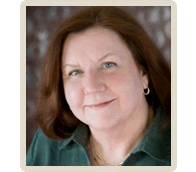 Please welcome guest blogger Karen N. Nemeth, writing about making science learning accessible in multilingual classrooms. Karen N. Nemeth, Ed.M. is an author, consultant and presenter focusing on improving early childhood education for children who are dual language learners. She is a writer and consulting editor for NAEYC and holds leadership positions at NABE and TESOL. She has published many books and articles for early childhood educators and she provides resources for supporting diverse young learners and their families at: www.languagecastle.com
Please welcome guest blogger Karen N. Nemeth, writing about making science learning accessible in multilingual classrooms. Karen N. Nemeth, Ed.M. is an author, consultant and presenter focusing on improving early childhood education for children who are dual language learners. She is a writer and consulting editor for NAEYC and holds leadership positions at NABE and TESOL. She has published many books and articles for early childhood educators and she provides resources for supporting diverse young learners and their families at: www.languagecastle.com
Science learning provides so many opportunities for hands-on exploration, discovery and discussion in early childhood. But, how can teachers make science learning meaningful for children who don’t speak the same language? The key to succeeding with dual language learners is to plan science activities with five key questions in mind:
- Will the materials and experiences in this activity make sense to a child who doesn’t understand what I say?
- Will this activity teach knowledge and/or skills that the child will have many opportunities to use in every day life?
- Will this activity focus on the here and now to support beginning science learning?
- What words do you know in the child’s home language that you can use to help him or her connect to the vocabulary of the planned activity?
- What resources can you use to help the child understand the words, concepts and connections you want him or her to make in this activity?
These questions will help you in two ways. First, they will help you to make adaptations to the activities you plan to introduce so that the learning is accessible to all of the children. Second, they will guide you in deciding when some activities are just not going to work with a group of children who speak different languages.
Miss Janet saw a fun science idea on a teacher website. She thought about buying the bars of white soap and putting them in the microwave to watch them expand. The video on the website was pretty amazing. But, as Miss Janet starting adding the activity to her lesson plan format, she realized it didn’t really make a good connection for her students who are DLLs. She could use her words to explain what she was doing, but just watching a bar of soap expand in a microwave didn’t have any real meaning that a child could use and it was certainly not self-explanatory for DLLs. So, she moved on to an activity that she knew would benefit all of her students.
There are plenty of options for science explorations, so letting go of some just makes room for you to try others. Try these tips from a recent post on www.languagecastle.com
 Focus on activities that are linked to real life experiences that children can recognize and connect with their prior knowledge. Look for materials that children already understand so they don’t depend on explanations. Ex: Explore how food grows, where it grows, which animals eat what, and how we use science to prepare foods. Planting seeds is a wonderful science activity, but may be best left until a bit later in the school year when DLLs have more experience with the nature of science and the practices of science. When they are just getting started in school and learning a new language, activities that show no immediate results may be hard for them to understand. After they have adjusted to classroom practices and routines and they have begun to learn more science vocabulary in their home language and in English, long-term projects will be more effective.
Focus on activities that are linked to real life experiences that children can recognize and connect with their prior knowledge. Look for materials that children already understand so they don’t depend on explanations. Ex: Explore how food grows, where it grows, which animals eat what, and how we use science to prepare foods. Planting seeds is a wonderful science activity, but may be best left until a bit later in the school year when DLLs have more experience with the nature of science and the practices of science. When they are just getting started in school and learning a new language, activities that show no immediate results may be hard for them to understand. After they have adjusted to classroom practices and routines and they have begun to learn more science vocabulary in their home language and in English, long-term projects will be more effective.
- Learn key vocabulary in the children’s home languages so you can explicitly connect the new words to words they already understand. Home language vocabulary is connected to a collection of concepts, so linking home language to new has lots of learning benefits. Ex. “This is a little frog. In Spanish we say la ranita. La ranita is a little frog – let’s all jump like a frog together.” This is more than translation – it helps the child take everything he knows about frogs and transfer it to his new language. Research shows that concepts learned in the home language transfer readily to the new language and form a solid foundation for future learning.
 Assign science buddies (peers or adult volunteers) to work together so children can have interesting conversations about their discoveries, even if you don’t understand what they say. Be sure to record the interactions so someone can help you translate and assess the level of each child’s learning.
Assign science buddies (peers or adult volunteers) to work together so children can have interesting conversations about their discoveries, even if you don’t understand what they say. Be sure to record the interactions so someone can help you translate and assess the level of each child’s learning.
- Use digital resources to support topics you want to explain or discuss. Choose topics that you can find on Youtube.com, Teachertube.org, or National Geographic’s website, for example, so children can see the process that you are trying to explain.
- Learn a few key questions in the languages of the children so you can guide their thinking and let them continue independently. Ex. What do you think will happen next? How does this feel or smell? Encourage children to answer in any language – or even with drawings – to express their knowledge.
Now – dig in and have fun with science learning that works for DLLs!
Miss Janet went through a list of science activities. She crossed out “outer space” and “dinosaurs” because they can’t be represented in the here and now or in a child’s every day life. Instead, she came up with her own activities that involved cleaning things up in the classroom. She brought in different materials and explored with the children what happened when they blotted spilled water with paper towel, a sponge, a brush and dustpan, a plastic bag, a spray bottle of water or some aluminum foil. Then she presented other potential messes like spilled sand, a pile of crayons, and some beads. Using photos, Miss Janet encouraged the children to work in pairs to chart which materials were most effective for each kind of mess. She modeled for the children how they could draw what they observed or take pictures with their iPads. Some children focused on trying the same thing repeatedly. Others tried a few things and talked all about them together. And a few others focused intently on testing each combination and recording what they learned. The activity was meaningful and informative for all of the children and allowed each of them to learn about the physical world and about making observations even if they didn’t yet speak English!
 Please welcome guest blogger Karen N. Nemeth, writing about making science learning accessible in multilingual classrooms. Karen N. Nemeth, Ed.M. is an author, consultant and presenter focusing on improving early childhood education for children who are dual language learners. She is a writer and consulting editor for NAEYC and holds leadership positions at NABE and TESOL.
Please welcome guest blogger Karen N. Nemeth, writing about making science learning accessible in multilingual classrooms. Karen N. Nemeth, Ed.M. is an author, consultant and presenter focusing on improving early childhood education for children who are dual language learners. She is a writer and consulting editor for NAEYC and holds leadership positions at NABE and TESOL.
Nurture a love of learning in your science classroom
By Claire Reinburg
Posted on 2015-09-10
How can we cultivate a student’s (and a teacher’s!) natural love of learning and exploration amid so many demands in today’s schools? The recent article “When Success Leads to Failure” in The Atlantic by teacher–author Jessica Lahey drew our attention once again to the pressure students feel to test well and excel in their studies—perhaps at the expense of their love of learning. When facing numerous expectations, teachers and students constantly wonder, “Do we have time to follow our curiosity and explore that exciting question or problem raised during today’s lab? Or is it time to turn toward the next textbook chapter, college-application essay, or high-stakes exam?” For this month’s issue of Book Beat, we selected these lessons and activities that can help you nurture students’ love of science exploration and keep the light of curiosity shining brightly in your classroom.
When in Science Class, Do as Scientists Do
The beginning of the school year is the perfect time to introduce students to the many ways that scientists do their  work, including making observations, using models, and conducting experiments. Consider using Page Keeley’s formative assessment probe “‘Doing’ Science” from What Are They Thinking? Promoting Elementary Learning Through Formative Assessment to uncover what your K–5 students think about how we study science and the practices of scientists. With the insights you glean, you’ll have all you need to design classroom experiences that will help students see the numerous scientific methods we employ when exploring the natural world. Encourage your students in grades 8–12 to look for patterns, a key strategy scientists use to try to make sense of the bewildering array of natural phenomena we encounter daily.
work, including making observations, using models, and conducting experiments. Consider using Page Keeley’s formative assessment probe “‘Doing’ Science” from What Are They Thinking? Promoting Elementary Learning Through Formative Assessment to uncover what your K–5 students think about how we study science and the practices of scientists. With the insights you glean, you’ll have all you need to design classroom experiences that will help students see the numerous scientific methods we employ when exploring the natural world. Encourage your students in grades 8–12 to look for patterns, a key strategy scientists use to try to make sense of the bewildering array of natural phenomena we encounter daily.  The chapter “Science Without Numbers: Searching for Patterns” from John Haysom’s Science Fair Warm-Up, Grades 8–12: Learning the Practice of Scientists gives students opportunities to study data sets in search of underlying patterns, which can lead to deeper understanding of natural phenomena. (See also the books in the Science Fair Warm-Up series for grades 5–8 and 7–10 .)
The chapter “Science Without Numbers: Searching for Patterns” from John Haysom’s Science Fair Warm-Up, Grades 8–12: Learning the Practice of Scientists gives students opportunities to study data sets in search of underlying patterns, which can lead to deeper understanding of natural phenomena. (See also the books in the Science Fair Warm-Up series for grades 5–8 and 7–10 .)  For high school students, you can also download the lab “Environmental Influences on Animal Behavior: How Has Climate Change Affected Bird Migration?” from Victor Sampson and coauthors’ Argument-Driven Inquiry in Biology: Lab Investigations for Grades 9–12 to guide students in exploring animal behavior and the interactions among species and their environment. While engaged in this lab, students will learn about the differences between data and evidence and gain experience using an online database.
For high school students, you can also download the lab “Environmental Influences on Animal Behavior: How Has Climate Change Affected Bird Migration?” from Victor Sampson and coauthors’ Argument-Driven Inquiry in Biology: Lab Investigations for Grades 9–12 to guide students in exploring animal behavior and the interactions among species and their environment. While engaged in this lab, students will learn about the differences between data and evidence and gain experience using an online database.
Foster a Culture of Curiosity
 We know students are engaged when they ask “What is that?” and “What’s happening here?” at the sight of a puzzling object or phenomenon. Curiosity and questions drive scientific exploration. An important part of the scientist’s work is making observations and inferences when facing new phenomena, and having students explore these concepts early in the school year builds a foundation for their scientific studies. For elementary students, download the lesson “Earth Hounds” from Karen Ansberry and Emily Morgan’s Picture-Perfect Science Lessons, Expanded 2nd Edition: Using Children’s Books to Guide Inquiry, 3–6. This lesson begins with reading the entertaining book Dr. Xargle’s Book of Earth Hounds, in which an alien professor draws hilarious conclusions from his observations of dogs. Students then make observations and inferences about the unseen properties of mystery objects, all while learning the differences between observations and inferences and how scientists generate knowledge using both. For K–8 students, download
We know students are engaged when they ask “What is that?” and “What’s happening here?” at the sight of a puzzling object or phenomenon. Curiosity and questions drive scientific exploration. An important part of the scientist’s work is making observations and inferences when facing new phenomena, and having students explore these concepts early in the school year builds a foundation for their scientific studies. For elementary students, download the lesson “Earth Hounds” from Karen Ansberry and Emily Morgan’s Picture-Perfect Science Lessons, Expanded 2nd Edition: Using Children’s Books to Guide Inquiry, 3–6. This lesson begins with reading the entertaining book Dr. Xargle’s Book of Earth Hounds, in which an alien professor draws hilarious conclusions from his observations of dogs. Students then make observations and inferences about the unseen properties of mystery objects, all while learning the differences between observations and inferences and how scientists generate knowledge using both. For K–8 students, download  “The Little Tent That Cried,” a chapter from Richard Konicek-Moran’s Everyday Earth and Space Science Mysteries that can be an excellent introduction to the water cycle. Students engage with the story of two young campers who awake to water dripping on them inside their tent. Just as the children in the story puzzle over where the water is coming from, your students will ponder the source of the dripping water while learning more about condensation and evaporation in the context of a natural situation. Explore other topics covered by the many stories in the Everyday Science Mysteries series.
“The Little Tent That Cried,” a chapter from Richard Konicek-Moran’s Everyday Earth and Space Science Mysteries that can be an excellent introduction to the water cycle. Students engage with the story of two young campers who awake to water dripping on them inside their tent. Just as the children in the story puzzle over where the water is coming from, your students will ponder the source of the dripping water while learning more about condensation and evaporation in the context of a natural situation. Explore other topics covered by the many stories in the Everyday Science Mysteries series.
How can we cultivate a student’s (and a teacher’s!) natural love of learning and exploration amid so many demands in today’s schools? The recent article “When Success Leads to Failure” in The Atlantic by teacher–author Jessica Lahey drew our attention once again to the pressure students feel to test well and excel in their studies—perhaps at the expense of their love of learning.



